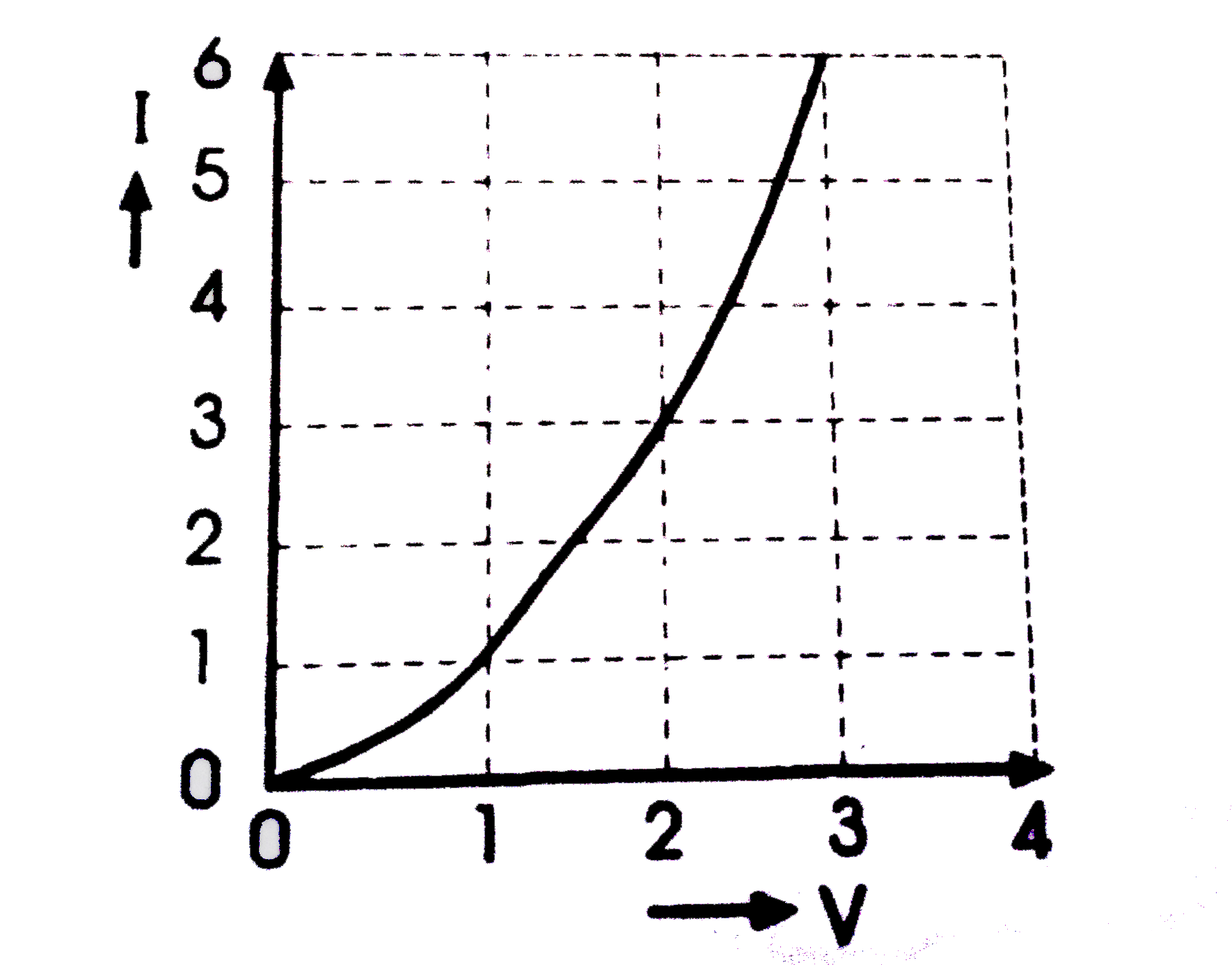A cell of emf 1.5 V and internal resistance 0.5Ω is connected to a (non-linear) conductor whose V. - I graph is shown in figure. Obtain graphically the current drawn from the cell and its terminal voltage. 
ε=1.5 r=0.5. Let Ibe the current
∴ε−IR=I×r i.e.,,ε−V=Ir
i.e.,1.5-V=1×0.5………..(1)
When V=1.5V,1=0
when V=0V,I=3A
Plot a straight line graph for (1). One intersection forms the operating voltage (0.9V) and current 1.2 A. (The graph may be reproduced on a graph paper)
Topper's Solved these Questions
- CURRENT ELECTRICITYBOOK - NEW JOYTHI PUBLICATIONCHAPTER - CURRENT ELECTRICITYEXERCISE - COMPETITIVE EXAM CORNER
37 Videos
- CURRENT ELECTRICITYBOOK - NEW JOYTHI PUBLICATIONCHAPTER - CURRENT ELECTRICITYEXERCISE - PRACTICE PROBLEMS FOR SELF ASSESSMENT
25 Videos
- ATOMSBOOK - NEW JOYTHI PUBLICATIONCHAPTER - ATOMSEXERCISE - COMPETITIVE EXAM CORNER
5 Videos
- DUAL NATURE OF RADIATION AND MATTER BOOK - NEW JOYTHI PUBLICATIONCHAPTER - DUAL NATURE OF RADIATION AND MATTER EXERCISE - COMPETITIVE EXAM CORNER
15 Videos
Similar Questions
A cell of emf 1.5 V and internal resistance 0.5Ω is connected to a (non-linear) conductor whose V-I graph is shown in Fig. 4.36 (a). Obtain graphically the current drawn from the cell and its terminal voltage.
View SolutionA cell emf 3V and internal resistance 0.75Ω is connected to a nonlinear conductor whose V-I g raph is shown in figure obtain graphically the current drawn from the cell and its terminal voltage.

View Solution
Knowledge Check
A cell of emf 2 V and internal resistance 0.1Ω is connected with a resistance of 3.9Ω The voltage across the cell terminal will be
A1.95VB1.90VC0.50VD2.00VA cell of emf 2.0 V and internal resistance 0.1 Ω is connected with a resistance of 3.9Ω. The voltage across the cell terminals will be
A0.50 VB1.90 VC1.95 VD2.0 V
A cell emf 3V and internal resistance 0.75Ω is connected to a nonlinear conductor whose V-I g raph is shown in figure obtain graphically the current drawn from the cell and its terminal voltage.

View Solution(a) Six lead-acid type of secondary cells each of emf 2.0 V and internal resistance 0.015 Ω are joined in series to provide a supply to a resistance of 8.5 Ω. What are the current drawn from the supply and its terminal voltage ?
(b) A secondary cell after long use has an emf of 1.9 V and a large internal resistance of 380 Ω . What maximum current can be drawn from the cell ? Could the cell drive the starting motor of a car?
View Solution(a) Six lead-acid type of secondary cells, each of emf 2.0 V and internal resistance 0.015Ω are joined in series to provide a supply to a resistance of 8.5Ω. What are the currents drawn from the supply, and its terminal voltage?
(b) A secondary cell after long use has an emf 1.9 V and a large internal resistance of 380Ω. What maximum current can be drawn from the cell? Could the cell drive the starting motor of a car?
View Solution(a) Six lead-acid type of secondary cells each of emf 2−0 V and internal resistance 0−015Ω are jouned in series to provide a supply to a resistance of 8−5Ω. What are the current drawn from the supply and its terminal voltage ?
(b) A secondary cells after long use has an emf of 1−9 V and a large internal resistance of 380Ω. What maximum current can be drawn from the cell ? Could the cell drive the starting motor of a car ?
View Solution.A cell of emf E and internal resistance r is connected across a variable resistor. Plot a graph showing variation of terminal voltage V of cell versus the current.
View SolutionA cell of emf 1.1V and internal resistance 0.5Ω is connected to a wire of resistance 0.5Ω. Another cell of the same emf is connected in series bur the current in the wire remain the same .Find the internal resistance of second cell
View Solution
